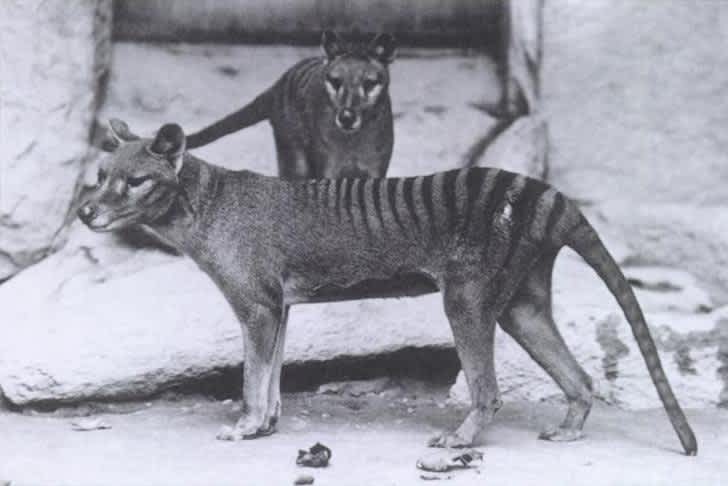UK Zoologists Search for Last Tasmanian Tigers
OutdoorHub Reporters 11.12.13

Two British scientists and their team arrived on the island of Tasmania earlier this month with a startling claim: the Tasmanian tiger is still alive, and they will find it. According to the Daily Mail, zoologists Chris Clark and Richard Freeman are part of Britian’s Centre for Fortean Zoology, an organization dedicated to cryptozoology. Clark and Freeman claim that they have evidence that one or more Tasmanian tigers still exist in the dense forests of their island homeland, although scientists have widely agreed that the last of the species died in captivity in 1936.
Also known as thylacines, Tasmanian tigers were the largest living marsupial species before their extinction. About the size of a large dog and bearing dark, tiger-like stripes, the Tasmanian tiger was first documented in 1805. By that time, only a small population existed on Tasmania, although the species previously existed on the Australian mainland as well. More than a century later, the last Tasmanian tiger was captured and transported to a zoo in Hobart, Tasmania. The animal lived for three years in captivity before its death in 1936, when scientists officially declared the species extinct. Since then, numerous sightings have been claimed in Tasmania and the animal remains a popular topic among cryptid hunters—who search for extinct and other “unknown” animals—and scientists.
The Centre for Fortean Zoology previously conducted expeditions to find cryptids such as the Yeti, but places a special importance on the Tasmanian tiger. In fact, the tiger is used as part of the Centre’s logo.
“This is very serious and we’re putting aside all the other crazy things like Bigfoot hunts and concentrating very much on getting the first convincing evidence that the Tasmanian tiger still exists,” said expedition member Mike Williams.
According to The Guardian, Freeman says that several witnesses, including a wildlife officer, have claimed to spot the elusive animal in recent years. Freeman previously spoke with a forestry worker who saw a dog-like animal with distinctive stripes and cow-like gait in 2011.
“The area is so damn remote, there are so many prey species and we have so many reliable witnesses who know the bush that I’d say there is a reasonable population of them left,” Freeman told The Guardian. “I’d say there are more of them around in the world than Javan rhinos.”
Freeman’s team came prepared before venturing into the Tasmanian jungle. Along with four-wheel-drive vehicles especially suited to the dense forest, the expedition brought along a variety of cameras, binoculars, and scientific equipment. Camera traps placed throughout the island’s north and southwest will be monitoring for thylacine movement.
Freeman admits that finding one of these creatures will be hard, but he says his team is determined. If they do capture hard evidence of a live Tasmanian tiger, Freeman’s team may come into a bit of cash as well. In the 1980s, businessman Ted Turner offered a $100,000 reward for proof of a live specimen. Although that reward is no longer in effect, the Australian magazine The Bulletin offered a $1.23 million reward for the capture of a live animal in 2005. That prize has not yet been claimed.

